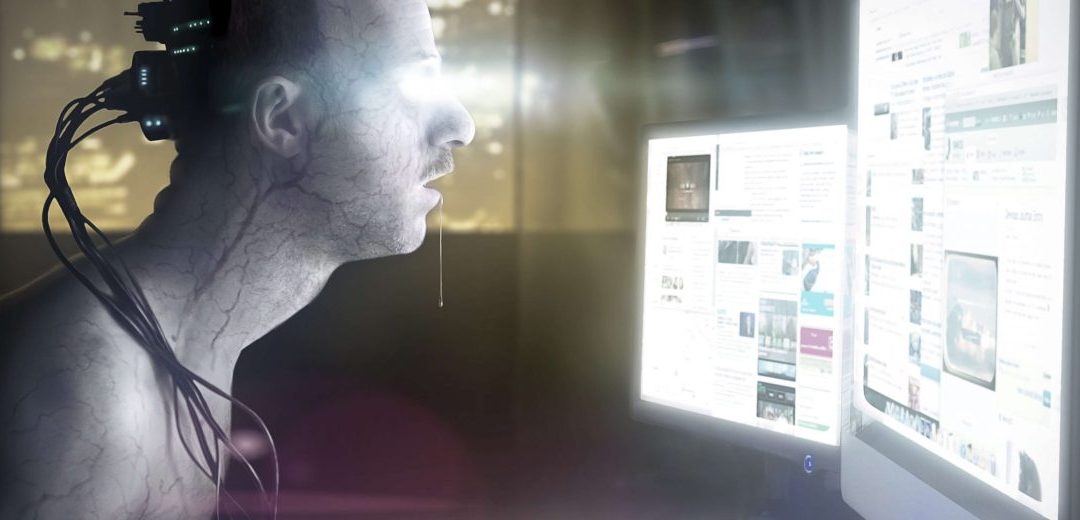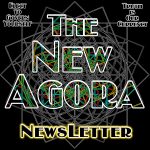Social Media – Why it Sickens the Self and Divides Society
The following is a transcript of the video found at the end.
“WHAT HATH GOD WROUGHT?”
These were the first words sent over the newly invented electric telegraph machine in May 1844. This message proved to be prophetic. For the communication technologies that followed in the wake of the telegraph, from the telephone, to the radio, to TV, computers, the internet, and now smart phones and social media, have radically altered the fabric of society.
In this series of videos we are going to explore some of the effects of modern communication technology use. For while remarkable achievements of human ingenuity, these technologies are a double-edged sword. Communication is easier than ever, but so too is the ability of governments and corporations to track and monitor us. The media and educational gate-keepers of old have been irreparably weakened by the rise of the internet and social media – which was a boon to curious minds – but these technologies are also being used to manipulate us through censorship and rampant propaganda. And while creating new possibilities for how we work, learn and entertain ourselves, these technologies have an addictive side that promote anxiety disorders and a wasted life.
In the first video of this series we will explore how the use of these technologies, and specifically social media use, is altering how many of us answer the fundamental question: “Who am I?”. Our answer to this question, or the story we tell ourselves about ourselves, forms our identity, or self-concept. How we approach the challenges of life, what we believe we are capable of, how we treat others, what we value and even how we view the world, all are influenced by our self-concept, or as the psychologist Michael Mahoney writes:
“Like a spontaneous projector of different light forms and frequencies, [our sense of self] formidably constrains and construes the reflections of its own castings. It is an ever-present but invisible navigator or sculptor in a lifelong journey. . .” (Human Change Process)
Michael Mahoney, Human Change Processes
The health or sickness of a society is an emergent by-product of the health or sickness of the self-concepts of the people who populate that society. A society full of individuals with weak self-concepts, self-concepts that are fearful of novelty, infused with helplessness, riddled by anxiety, plagued by self-hate or lacking in self-reliance, can only be a sick society.
“For one thing is needful: that a human being should attain satisfaction with himself…only then is a human being at all tolerable to behold. Whoever is dissatisfied with himself is continually ready for revenge, and we others will be his victims…”
Nietzsche, The Gay Science
Our self-concept is in continuous development and it is the product of many factors, including our upbringing, education, biology, environment, interpersonal relations and intrapersonal experiences. But one of the most important factors in the shaping of our selfhood is the predominant identity formation mechanism of our society. To understand what an identity formation mechanism is, we will examine the two mechanisms that preceded the rise of social media, namely sincerity and authenticity.
Sincerity prevailed in the West until a few generations ago and was based on the idea that one’s identity was intimately tied to a set of social roles. These roles were not chosen by the individual, but given to him or her by family and community. One’s identity then emerged in the attempt to play these roles in a sincere manner.
“In earlier times, identity was typically assigned by the social roles one was born into. Along with birth came not only one’s gender but also one’s tribal or ethnic identity, one’s social class, one’s profession, and one’s religion.” (You and Your Profile)
Hans-Georg Moeller and Paul D’Ambrosio, You and Your Profile
In the 19th and 20th centuries greater social mobility and more equality of opportunity unleashed a newfound freedom of self-expression. Pre-determined social roles of class, gender, religion and ethnicity declined in importance and the identity formation mechanism of sincerity was replaced by authenticity. Under authenticity one discovers, realizes or creates one’s identity and so selfhood formation becomes an individual’s task. For some this proves to be a blessing as it unlocks possibilities and potentials that are stunted when one is expected to sincerely conform to predetermined social roles, for others it is a burden as with freedom of self-expression comes responsibility for the self that is created.
But a strange thing has occurred with the rise of social media: many people are reverting back to a mechanism of identity formation that resembles sincerity, a mechanism of identity formation which Hans-Georg Moeller and Paul D’Ambrosio in You and Your Profile, have termed profilicity. Like sincerity, profilicity is other-directed and reliant on the reactions of an audience. With sincerity one’s family and community are the audience that casts judgement on how sincerely, or properly, one plays the pre-determined roles. With profilicity the audience is a generalized peer group consisting of hundreds, thousands or even millions of social media users and this audience plays a somewhat different role than under sincerity: not only does the audience judge the identity one forms, but it also helps shape the very roles one strives to play. For profilicty entails creating profiles on social media through the selective display of pictures and other bits of information, or in a more passive manner merely observing the profiles of admired personalities, and then using these idealized profiles as roles to play in real life. Or as Jeremy Weissman explains in The Crowdsourced Panopticon:
“. . . a simultaneous exchange occurs between the two entities, our digital [profiles] and our in-real-life self. As we broadcast idealized portraits of our in-real-life self online, we then in turn adjust our in-real-life self so as to meet with popular approval when we are broadcast online again. At a certain point, our in-real-life self and digital [profiles] practically merge.”
Jeremy Weissman, The Crowdsourced Panopticon
Forming an identity through the mechanism of profilicity has serious drawbacks. Firstly, it promotes an unhealthy degree of conformity. For to succeed in the world of social media is to conform as a successful profile is measured by metrics such as likes, shares and follows. But profilicity necessitates not just conforming to the preferences of one’s peer group, but also conforming to the standards set by those who manipulate the algorithms of social media, or as Weissman writes:
“Through the ever-increasing gaze of a pervasive audience online, we may become overly pressured, even coerced toward collective opinion, as social media’s mechanism of likes, dislikes, friends, and followers constantly subjects us to the crowd’s judgment along with that gaze.”
Jeremy Weissman, The Crowdsourced Panopticon
By promoting a hyper-conformity, profilicty limits our potential as the generalized peer group of social media users, and the manipulators of social media algorithms, have no interest in many elements that comprise a healthy sense of self. With profilicity if we step too far out of line, if we are too unique, or if our value system diverges too far from what is deemed acceptable, we will be shunned, shamed and ostracized. Appearances, superficialities, and adhering to the values of popular culture are what matter with profilicity, not cultivating a harmonized mind, a healthy body and a fulfilling life. What is more if we live in a sick society, this sickness will be embodied in the preferences of the generalized peer group and so in seeking validation of this crowd, and embodying their preferences, we lock ourselves into a sick sense of self.
“Once we give up our true self to play a role, we are fated to be rejected because we have already rejected ourselves. Yet we will struggle to make the role more successful, hoping to overcome our fate but finding ourselves more enmeshed in it. We are caught in a vicious cycle that keeps closing in, diminishing our life and being.”
Alexander Lowen, Fear of Life
But the flaws of profilicity are not limited to the stunting of our potential as this method of identity formation also promotes a rigidity in belief systems that hinders social progress and generates social conflict. For integral to the construction of a successful social media profile is the display of virtuousness through supporting the moral values of one’s generalized online peer group. Unlike times past when virtuousness was displayed through actions or verbal statements that were ephemeral in nature and limited in reach to one’s family, friends and community members, social media creates a permanent record of one’s moral stances for all the world to see. On social media our moral stances follow us into the future with a tenacity previously unknown to most people. As a result, even when presented with facts, information or experiences that run counter to the narratives used to support one’s views, many people refuse to correct them as this amounts to denying an important aspect of their social media constructed identity, or as Moeller and D’Ambrosio explain:
“Identification with the cause becomes so central and primary [in profilicity] that, strangely enough, one prefers news that the problem is really as bad as one fears it is – since this affirms the value of the cause, and thereby of one’s identification with it. If climate change or civil rights should turn out to be no longer an issue, the identity of those identifying with these causes would be undermined and deflated. One’s profile – built and maintained with sometimes a lifetime of effort, and in which one is thus deeply invested – would lose its social validity and become obsolete. The stronger the identification with a cause, the more the care for the cause also becomes the care for oneself.”
Hans-Georg Moeller and Paul D’Ambrosio, You and Your Profile
Under profilicity, the pursuit of truth has given way to the maintenance of identities and this is a recipe for a polarized society. To make matters worse, with social media algorithms being manipulated by tech companies in ways that serve powerful institutional interests, many people fail to realize that the moral stances of popular culture are merely stances that further the agendas of corrupt corporations and governments. But the societal impacts of modern communication technologies run even deeper than this, for as we will explore in the next video, these technologies may be leading us into the dystopian and prison-like conditions of a crowd-sourced panopticon – into a world where we are both the prisoners and guards in an all-pervasive, mass surveillance state.
About us:
Academy of Ideas is the creation of two brothers from Canada. All of the content is produced by us. We are not supported by or affiliated with any organization or university. Our goal is to to spread the message of individual liberty and empowerment to the world.
Become a Supporting Member and gain access to our growing library of Membership videos (currently 40+ videos)! Learn more by following the link below:
© 2021 Academy of Ideas



 academyofideas.com
academyofideas.com











